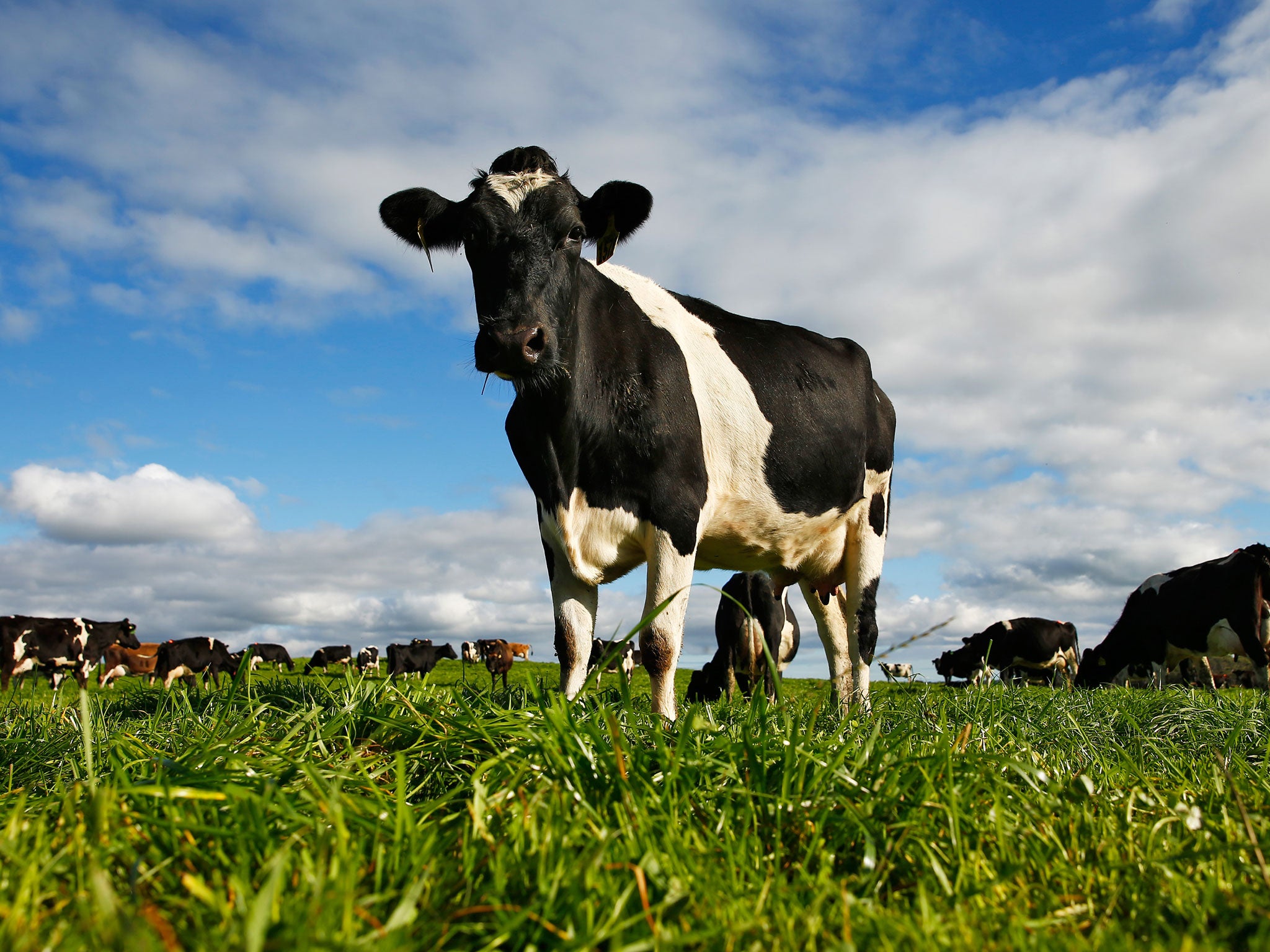Scientists invent grass that reduces dangerous methane emissions from flatulent cows
'Super grass' expected to be ready by 2024 and could also increase milk production

Your support helps us to tell the story
This election is still a dead heat, according to most polls. In a fight with such wafer-thin margins, we need reporters on the ground talking to the people Trump and Harris are courting. Your support allows us to keep sending journalists to the story.
The Independent is trusted by 27 million Americans from across the entire political spectrum every month. Unlike many other quality news outlets, we choose not to lock you out of our reporting and analysis with paywalls. But quality journalism must still be paid for.
Help us keep bring these critical stories to light. Your support makes all the difference.
Danish scientists are attempting to formulate a new type of grass which could be more efficiently digested by cattle, reducing the amount of methane gas cows produce by burping and causing them to produce more milk.
The £1.6million project will see genetics experts from the University of Aarhus in Denmark use DNA technology to create a strand of ‘super grass’ which could be grown on farms across the world.
"It will simply create a better diet for the cow, which can utilise the feed more efficiently and therefore they don't release as much methane when they burp," says senior researcher Torben Asp, who is overseeing the project.
Improving the digestion of cows will also see milk production rise over time, Mr Asp added.
According to estimates, around 90 million metric tonnes of methane gas are released into the atmosphere every year due to the belching of cattle, and the Aarhus project is one of several attempts to reduce emissions.
The US Food and Agriculture Organisation believes agricultural methane output could increase by 60 percent by 2030, with much of the gas being produced by the world’s 1.5 billion cows.
"We know that cattle are one of agriculture's culprits when it comes to releasing greenhouse gases, so it's important that we explore how we can reduce cows' emissions," Denmark's’ environment minister Esben Lunde Larsen told Berlingske.
“It's also a good example of future sustainable food production, in which there is a contradiction between growth and climate, but production goes hand in hand with nature.”
The super grass is expected be ready for use by 2024 at the latest, according to seed company DLF, which will mass-produce the strain
Subscribe to Independent Premium to bookmark this article
Want to bookmark your favourite articles and stories to read or reference later? Start your Independent Premium subscription today.
Join our commenting forum
Join thought-provoking conversations, follow other Independent readers and see their replies
Comments